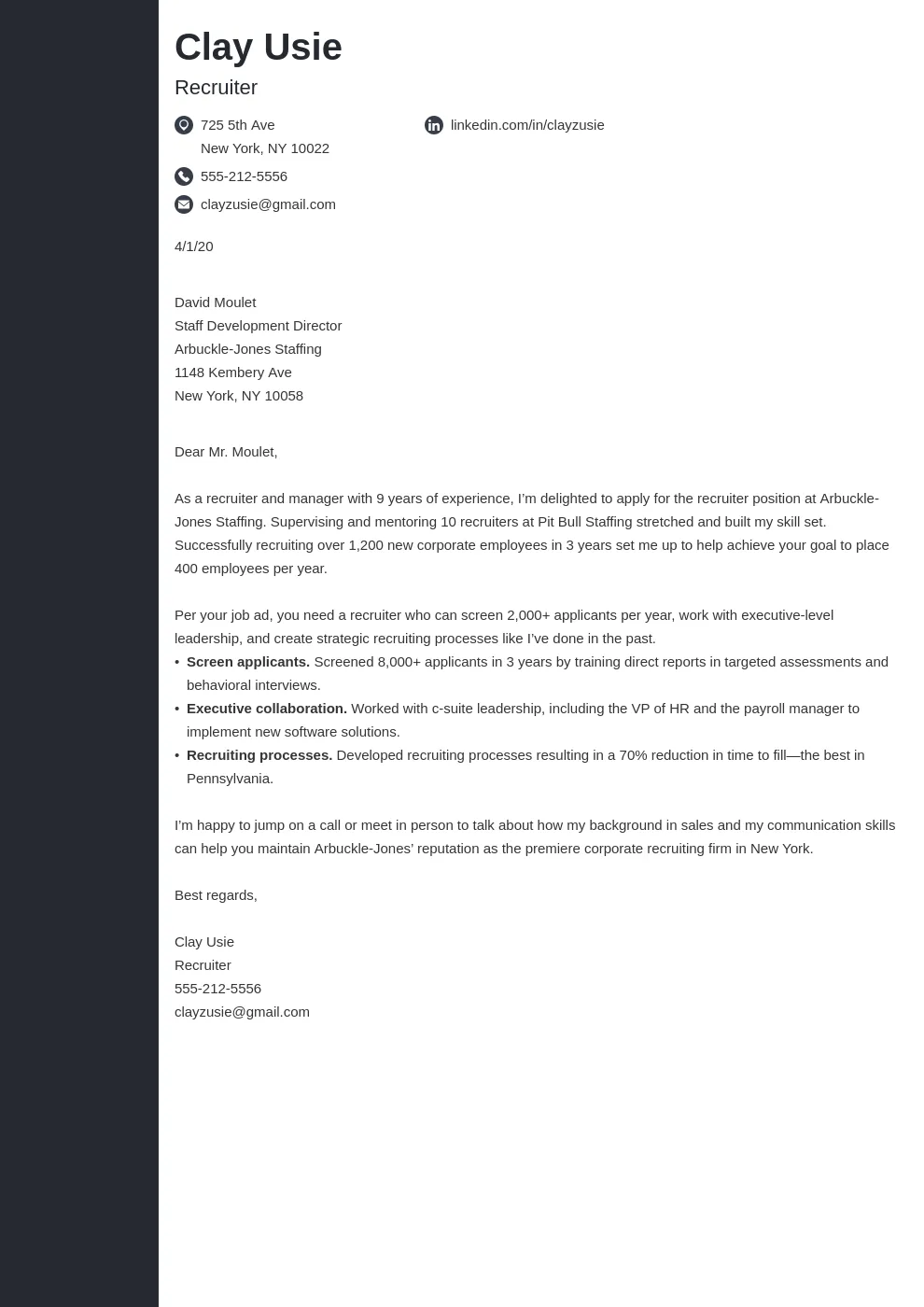Cover Letter Basics
A cover letter is a crucial document that accompanies your resume when applying for a job. It serves as your personal introduction, allowing you to highlight your skills, experiences, and qualifications in a way that a resume alone cannot. A well-written cover letter can significantly increase your chances of securing an interview, making it an essential part of any job application strategy. It provides an opportunity to showcase your personality and demonstrate your genuine interest in the specific role and company you are applying for. By tailoring your cover letter to each job application, you demonstrate that you have taken the time to understand the requirements and are a serious candidate. This is especially true when applying for a recruitment job, where your attention to detail and understanding of the hiring process is paramount.
Understanding the Purpose of a Cover Letter
The primary purpose of a cover letter is to persuade the hiring manager or recruiter to read your resume and consider you for an interview. It is your first impression, and a compelling cover letter can grab their attention and set you apart from other applicants. Furthermore, a cover letter allows you to expand on your resume and provide context for your experiences, explaining how your skills align with the job requirements. It is also an opportunity to express your enthusiasm for the role and company, demonstrating that you have researched the organization and understand its values and goals. For recruitment jobs, a cover letter demonstrates your professional writing skills, your understanding of the recruitment process, and your ability to communicate effectively, all of which are essential for success in the field.
Key Components of a Cover Letter
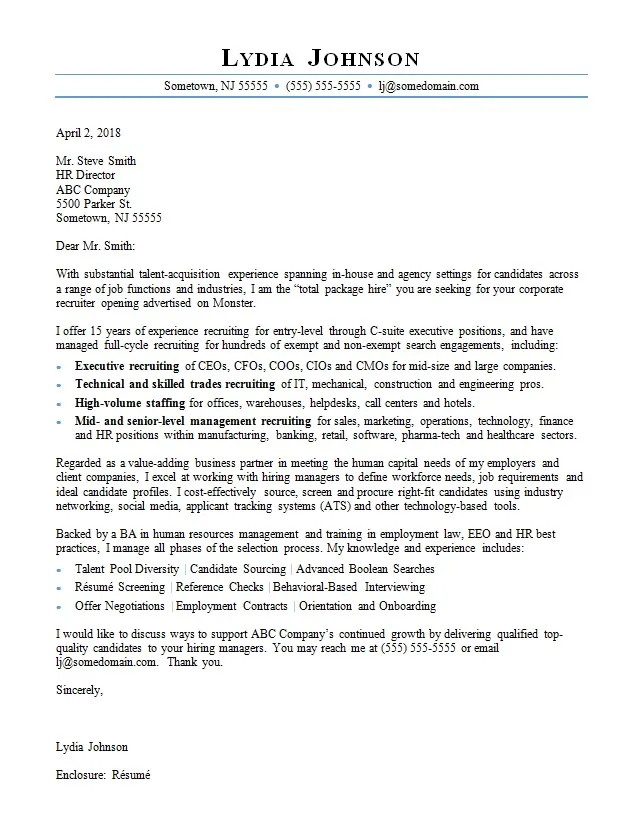
A well-structured cover letter typically includes several key components that work together to present a compelling case for your candidacy. Begin with a professional header that includes your contact information, followed by the date and the hiring manager’s or recruiter’s contact details. The salutation should be personalized, addressing the hiring manager by name if possible. The body of the letter is the main section, composed of a few paragraphs where you introduce yourself, highlight relevant skills and experiences, and express your interest in the role. A strong call to action is crucial, encouraging the reader to review your resume and contact you for an interview. Finally, conclude with a professional closing, such as “Sincerely” or “Best regards,” followed by your typed name. Ensure all components are thoughtfully crafted to make a positive impression. This is the building block for a strong application, and is particularly important in the competitive field of recruitment.
Formatting Your Cover Letter
Proper formatting is crucial for readability and professionalism. Use a clean and easy-to-read font, such as Arial or Times New Roman, with a font size between 10 and 12 points. Maintain consistent formatting throughout the document, including margins, line spacing, and paragraph spacing. Use single-spacing within paragraphs and double-spacing between paragraphs to enhance readability. The structure should include a header, salutation, body paragraphs, and a closing. Ensure that your cover letter aligns with the aesthetic of your resume. The overall presentation should be neat and uncluttered, making it easy for the reader to focus on the content. For recruitment jobs, the ability to present information clearly and professionally is paramount, so pay close attention to detail.
Header and Contact Information
The header should include your full name, phone number, email address, and optionally, your LinkedIn profile URL or your professional website. This information should be clearly displayed at the top of the page, making it easy for the recruiter to contact you. Include the date of the cover letter and the recipient’s contact information, including their name, title, and company address if available. Ensure the information is accurate and up-to-date. In the recruitment field, where communication is key, having a well-organized and professional header is an indicator of your attention to detail.
Salutation
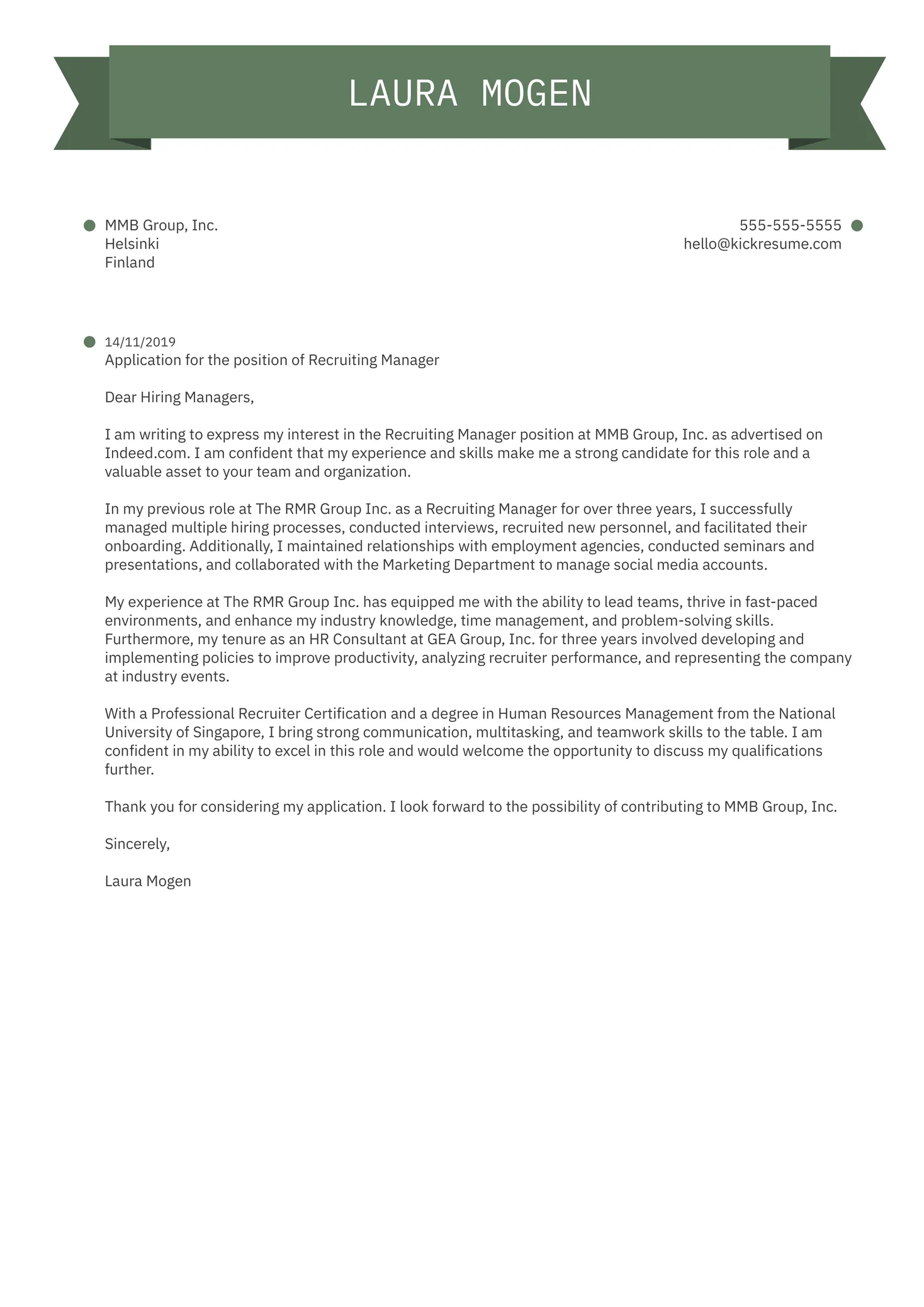
Always address the hiring manager or recruiter by name if possible. Research the company website, LinkedIn, or the job posting to find out the correct contact person. If you cannot find a specific name, use a professional greeting, such as “Dear Hiring Manager” or “Dear [Company Name] Recruitment Team.” Avoid generic salutations like “To Whom It May Concern,” as they can make your letter seem impersonal. Tailoring your salutation shows you’ve put in the effort and demonstrates your commitment to the position. This attention to detail is a key quality in recruitment jobs.
Body Paragraphs
The body paragraphs are the core of your cover letter, where you introduce yourself, highlight your skills and experiences, and express your interest in the role. The first paragraph should grab the reader’s attention and state the purpose of your letter. The second paragraph should showcase your relevant skills and experience, providing specific examples of how you have excelled in previous roles. The third paragraph is where you demonstrate your enthusiasm for the position and the company. And a fourth paragraph that concludes with a call to action, inviting the reader to review your resume and contact you for an interview. Each paragraph should be concise, focused, and compelling, making it easy for the recruiter to see your value.
First Paragraph: Grab Attention
Start with a strong opening statement that immediately captures the reader’s attention. Briefly mention the position you are applying for and how you learned about the opportunity. Highlight a key achievement or skill that aligns with the job requirements. Express your enthusiasm for the role and the company. Avoid generic opening lines such as “I am writing to express my interest…” Instead, aim to make your introduction engaging and personalized, demonstrating your genuine interest and showcasing your suitability for the role. For a recruitment job, it might be stating your experience in recruitment. This first paragraph is your chance to make a memorable first impression, so make it count.
Second Paragraph: Showcase Skills
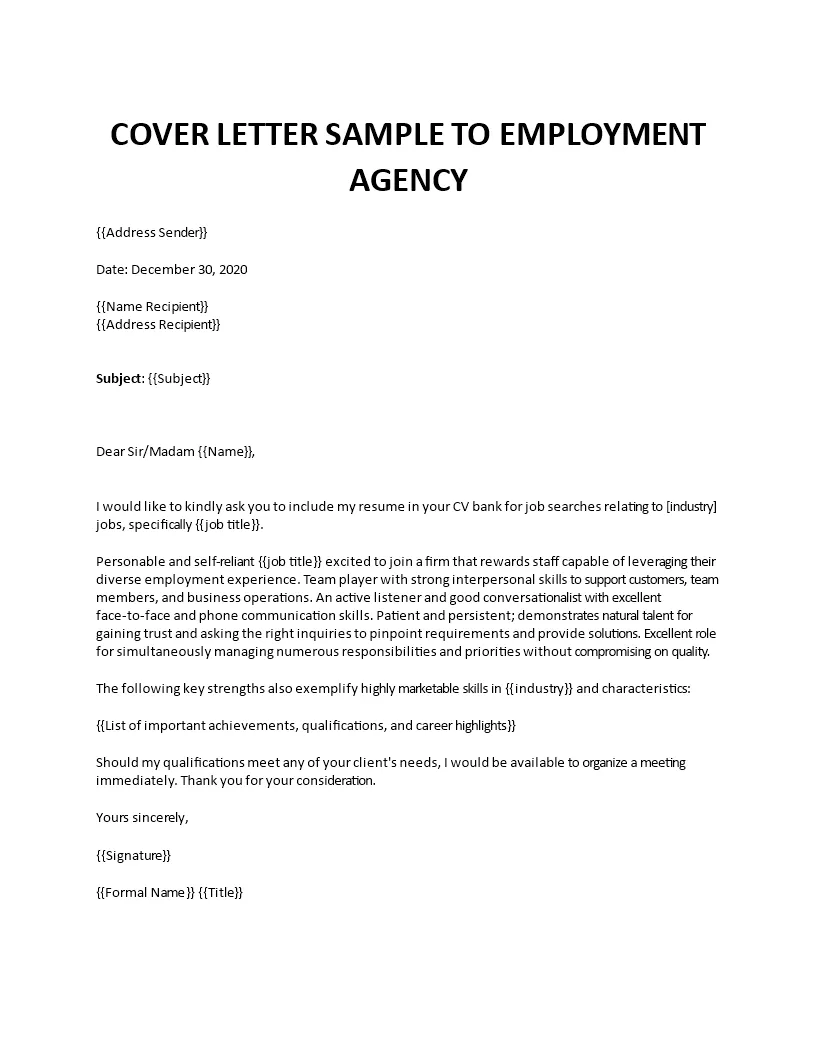
In this paragraph, showcase your relevant skills and experience that align with the job requirements. Review the job description carefully and identify the key skills and qualifications the employer is seeking. Provide specific examples of how you have used these skills in previous roles, quantifying your achievements whenever possible. Use action verbs to describe your accomplishments. Tailor your examples to match the specific needs of the role. For recruitment jobs, highlight your experience in sourcing, screening, interviewing, and placing candidates. This section should prove you have the necessary skills.
Third Paragraph: Demonstrate Enthusiasm
Use this paragraph to express your enthusiasm for the position and the company. Explain why you are interested in the role and what attracts you to the organization. Share what you know about the company’s mission, values, and culture. Demonstrate your understanding of the recruitment industry and your passion for the field. Show the recruiter why you are a good fit for the company. A genuine and well-expressed enthusiasm can leave a lasting impression. In a recruitment job, this is a crucial sign of your commitment and suitability for the role.
Fourth Paragraph: Call to Action
Conclude your cover letter with a clear call to action. Reiterate your interest in the position and express your desire for an interview. Thank the hiring manager for their time and consideration. Provide your contact information again, making it easy for them to get in touch. Avoid being overly demanding, but make it clear that you are eager to discuss your qualifications further. This is your opportunity to encourage the reader to take the next step. In recruitment, this is a great example of how you’d like the company to take action.
Closing the Letter
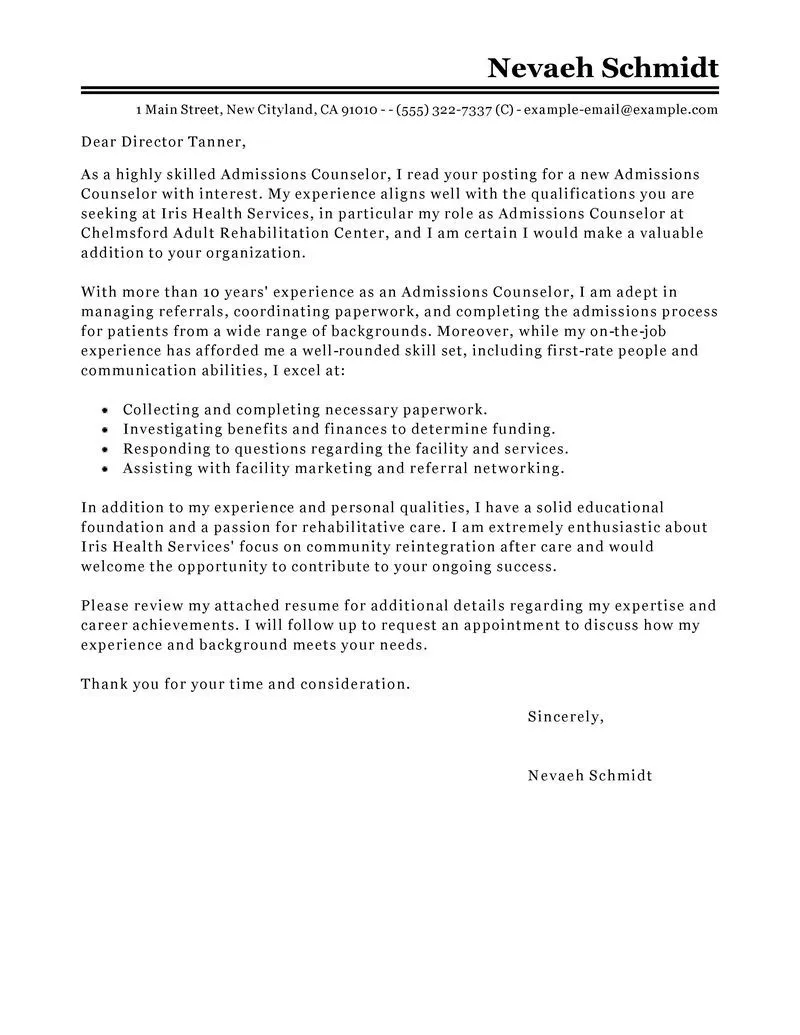
Use a professional closing, such as “Sincerely,” “Best regards,” or “Thank you.” Type your full name below the closing. If you are submitting a printed letter, leave space for your signature above your typed name. If you are submitting an electronic version, your typed name is sufficient. Ensure your closing is appropriate for the tone of your letter and the company’s culture. Proper closing makes your application look finished and professional. For a recruitment job, attention to such details is important.
Proofreading and Editing Your Cover Letter
Thorough proofreading and editing are essential to ensure your cover letter is free of errors. Check for typos, grammatical errors, and inconsistencies in formatting. Read your cover letter aloud to catch any awkward phrasing or unclear sentences. Consider having a friend, family member, or career advisor review your letter for feedback. A well-edited cover letter reflects your attention to detail and professionalism. For recruitment jobs, this is even more critical, as any errors can reflect poorly on your communication and organizational skills.
Tailoring Your Cover Letter for Recruitment Jobs
When applying for recruitment jobs, it’s essential to tailor your cover letter to highlight your relevant skills and understanding of the recruitment process. Focus on your experience in sourcing, screening, interviewing, and placing candidates. Demonstrate your knowledge of various recruitment methods, industry trends, and relevant software. Showcase your ability to build relationships with candidates and hiring managers. Tailoring your cover letter shows that you understand the job and that you are committed to the recruitment field, which is very important when applying.
Highlighting Relevant Skills and Experience
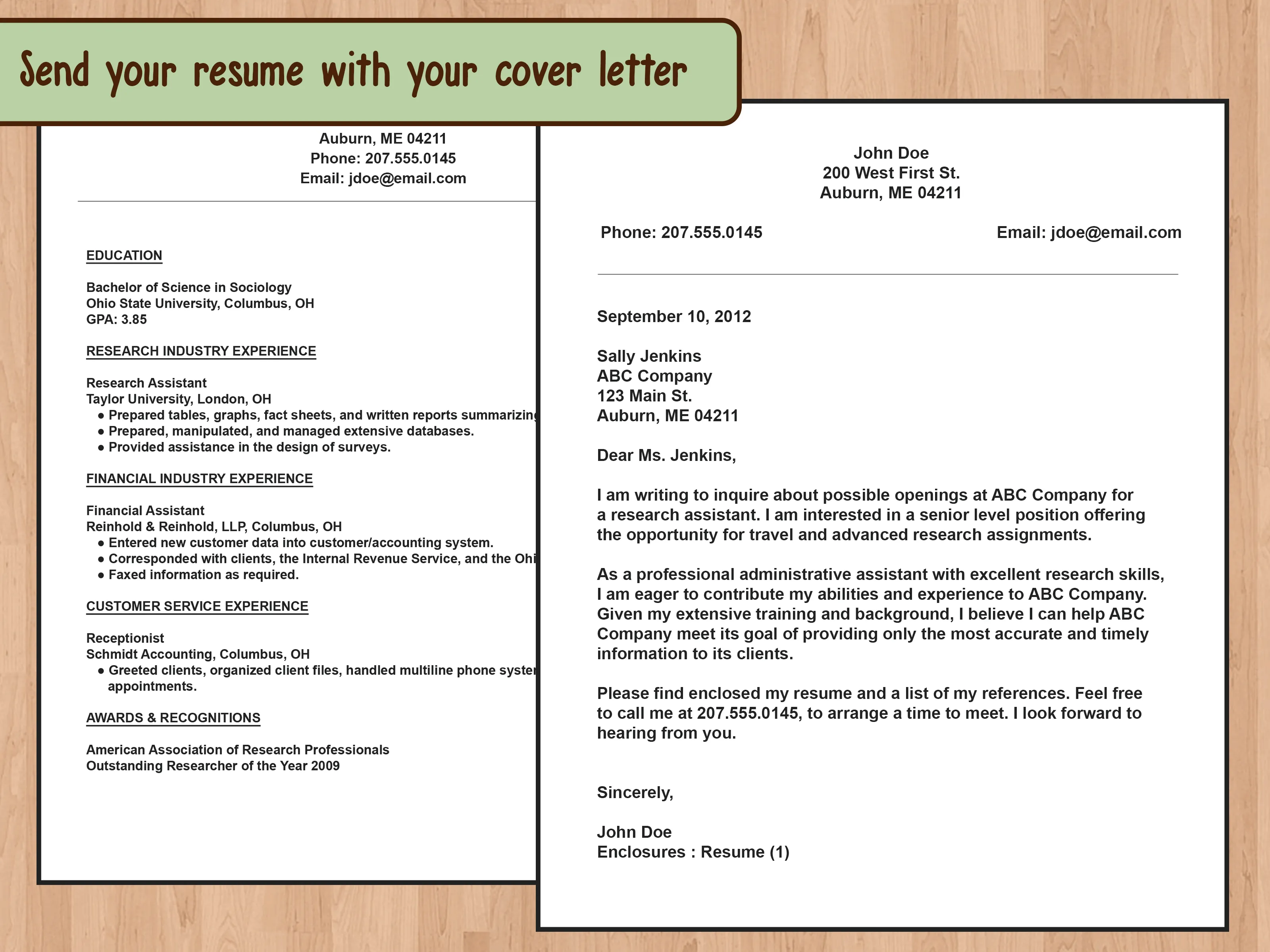
In your cover letter, highlight skills that are directly relevant to recruitment. Include experience in sourcing candidates, conducting interviews, assessing candidate qualifications, and managing the recruitment process. Provide specific examples of your accomplishments, such as the number of successful placements you have made or the reduction in time-to-hire achieved in previous roles. Quantify your achievements whenever possible to demonstrate the impact you have made. This will allow the hiring manager to see the value you bring to the table.
Showcasing Your Understanding of Recruitment
Demonstrate your knowledge of recruitment best practices and industry trends. Show that you are familiar with various recruitment methods, such as direct sourcing, social media recruitment, and online job boards. Mention your experience with applicant tracking systems (ATS) and other relevant software. Highlight your understanding of employment law and compliance regulations. Your understanding of the industry is essential to make you stand out as a viable candidate.
Using Keywords Effectively
Carefully review the job description and identify the keywords and phrases used to describe the desired skills and qualifications. Incorporate these keywords naturally into your cover letter, demonstrating that you have the skills and experience the employer is seeking. Avoid keyword stuffing, which can make your letter seem unnatural. Instead, weave the keywords seamlessly into your sentences. Using the right keywords increases your chances of the cover letter being selected.
Cover Letter Examples for Recruitment Professionals
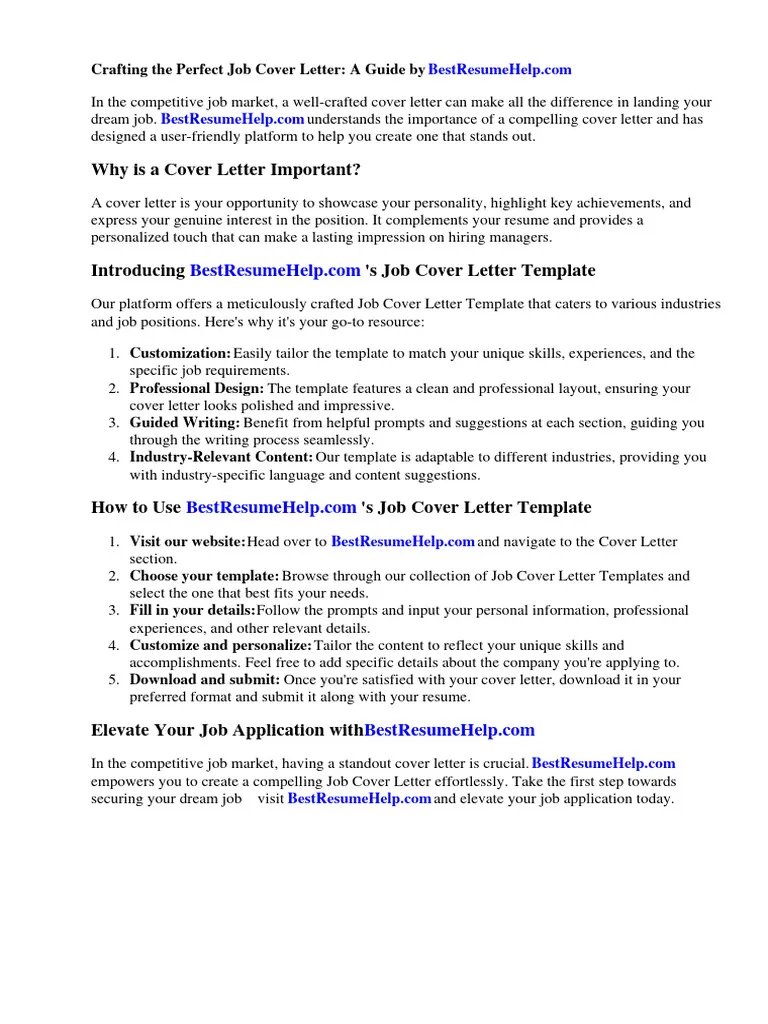
Reviewing examples of successful cover letters can provide valuable insights and inspiration. Look for examples that are tailored to recruitment roles and highlight the key skills and experiences mentioned above. Pay attention to the language used, the tone, and the overall structure of the letter. Adapt the examples to suit your own experiences and qualifications, ensuring that your letter is unique and reflects your personal brand. This is also a good starting point for developing your application.
Common Mistakes to Avoid
Avoid common mistakes that can undermine your cover letter and decrease your chances of getting an interview. These mistakes can prevent you from getting your desired role, making it important to take the time and avoid these errors. A lot of these mistakes can be avoided by proofreading your application. Make sure to avoid common mistakes to ensure your letter is as strong as possible.
Overused Phrases and Clichés
Avoid using overused phrases and clichés that can make your letter sound generic and unoriginal. Replace these phrases with fresh, concise language that highlights your unique skills and experiences. Examples include clichés such as “hard worker” or “team player.” Instead, use action verbs and specific examples to show your skills. Show the hiring manager that you are a thoughtful applicant.
Typos and Grammatical Errors
Typos and grammatical errors can create a negative impression and make your cover letter seem unprofessional. Always proofread your letter carefully and use spell-check and grammar-check tools to catch any errors. Consider having someone else review your letter for a fresh perspective. Paying close attention to detail is crucial in recruitment, so ensure that your letter is polished and error-free. Typos and grammatical errors can damage your chances, so check multiple times before submitting your application.
Ignoring the Job Description
Failing to tailor your cover letter to the specific job description is a common mistake. Take the time to carefully read the job posting and identify the key skills and qualifications the employer is seeking. Customize your letter to highlight how your skills and experiences align with the job requirements. Address the specific needs of the role and explain why you are a good fit. It can make the difference between getting an interview and getting rejected. Ignoring the job description could mean that you do not stand out from other candidates.
Finalizing and Submitting Your Cover Letter
Before submitting your cover letter, review it one last time to ensure it is free of errors and tailored to the specific job. Save your letter in a professional format, such as PDF, to preserve the formatting. Follow the instructions in the job posting for submitting your application. Double-check that you are attaching your cover letter and resume correctly. Submitting a well-crafted cover letter can significantly increase your chances of getting an interview and landing your desired recruitment job. Following these steps is key to success.
